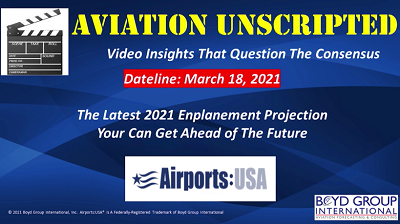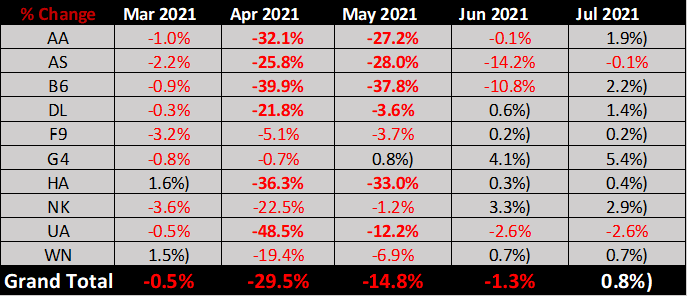Recovery In The US Airline Industry – Selectively
Last week,based on data from our friends at Cirium, U.S. air carriers slashed another almost 30% out of the already-filed April schedules… May has just started to get the knife.
Nevertheless, traffic is growing slowly, but based on entirely different air travel dynamics. US carriers are moving toward being cash-positive. But the fact remains that the air transportation system will be smaller. The fact also remains that international traffic is going to continue to to be constricted, which will drive additional changes in airline fleets and long-term strategies.
The open question is fleet decisions. We are seeing indications that network carriers are moving to the middle… smaller narrow-body units. One indication was United bringing in a used 737-700, and American/Envoy leasing in some used E170s.
Meanwhile, a number of airports across the country are getting pleasant surprises, with major carriers unilaterally adding additional hub-spokes as well as some probably-experimental point-to-point flying.
ULCCs – the “parallel” air transportation system is going to larger units of single-aisle capacity. Frontier is retiring A319s and adding A321s, including at last look a number of A321XLR units.
The Airports:USA forecast is still indicating year 2019 traffic levels to return by 2024 nationally. Within that, as we’ve outlined in recent Insights, there will be at least two dozen US airports that will exceed 2019 enplanements by the end of this year.
More data in this week’s Touch & Go newsletter for our clients and friends.
_______________________
In This Week’s Aviation Unscripted…
“Try new approaches. If they don’t work, fail fast and move on…”
That was the message from United Airlines at the 25th International Aviation Forecast Summit last October. It’s the absolute right recipe to get through these uncharted times.
In the new air transportation systems and changes in consumer patterns, airlines have to move fast and flexibly in planning the future. They are doing just that, which means that there are no hard  and fast rules. Things change overnight as carriers strategize out of the damage done by the CCP pandemic.
and fast rules. Things change overnight as carriers strategize out of the damage done by the CCP pandemic.
Traditionally, airport enplanement forecasts were static document updated every year or so. The air transportation industry was stable – no across-the-industry disruptions.
That’s no longer the case. As airports have found, air service trends are changing daily. Capacity levels, schedule patterns, fleet applications, and even new service entry can come as a surprise.
This means that traffic forecasting needs to be a live, constantly updated document. One airline expansion or deleting can change everything.
We cover this in the latest Unscripted… it’s a short view, but has some points important to maximizing the future.
Log on and join your colleagues. We are excited regarding the viewership on Rumble and other access points. We appreciate the support!
